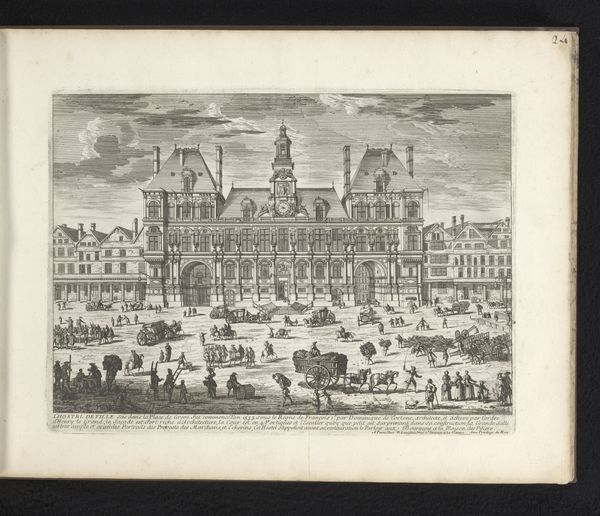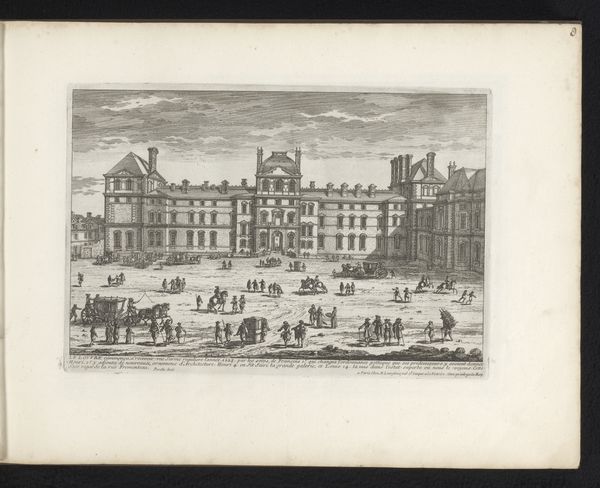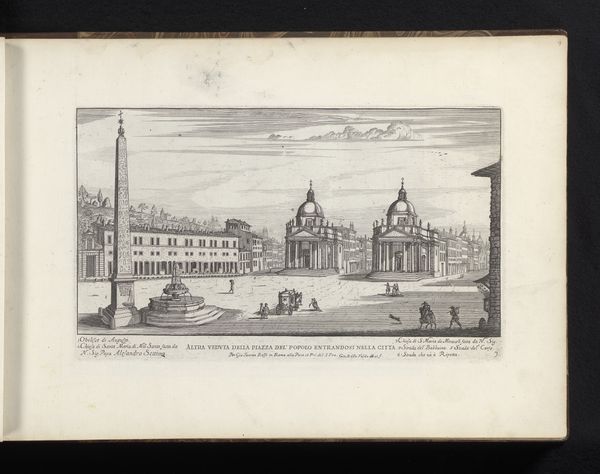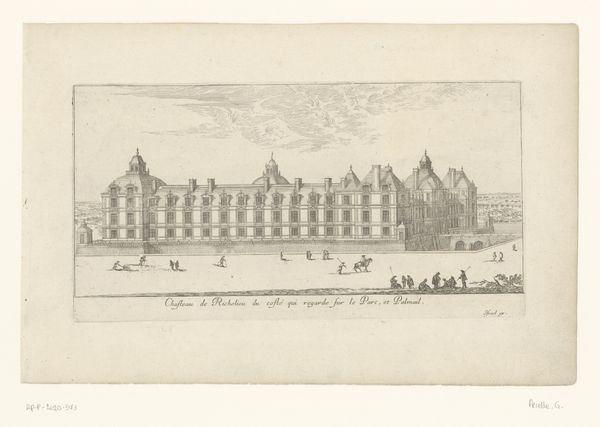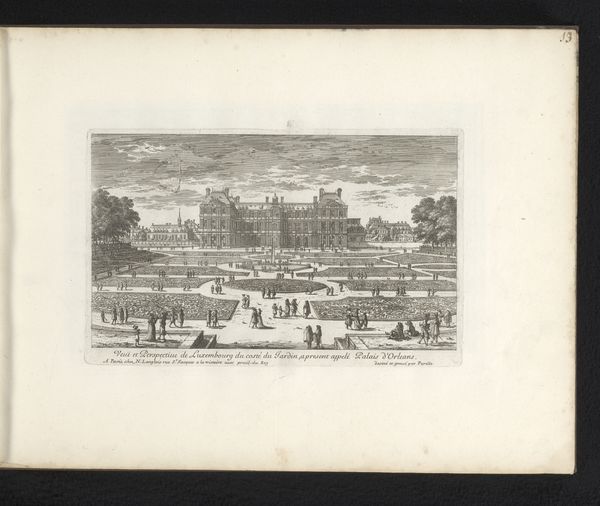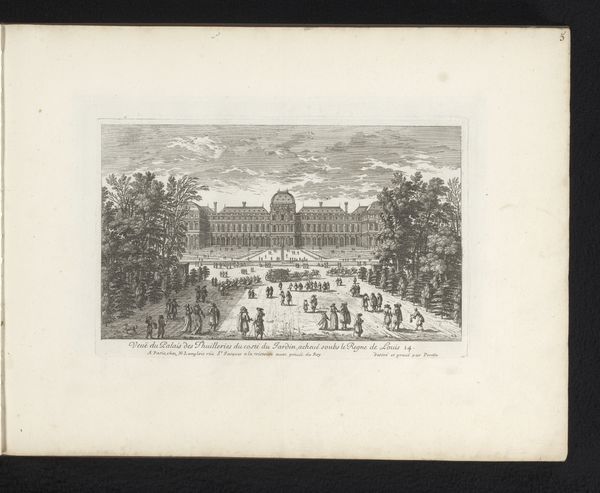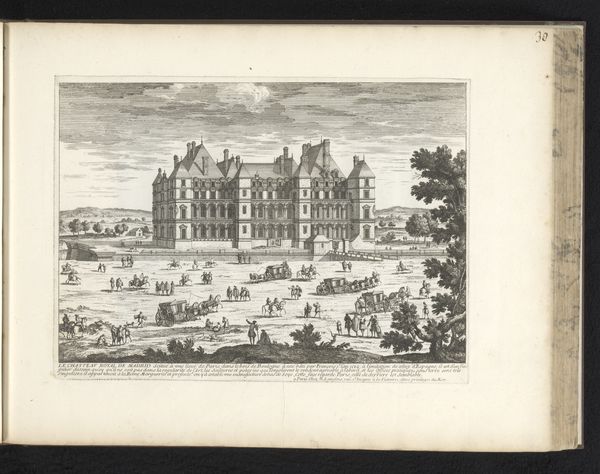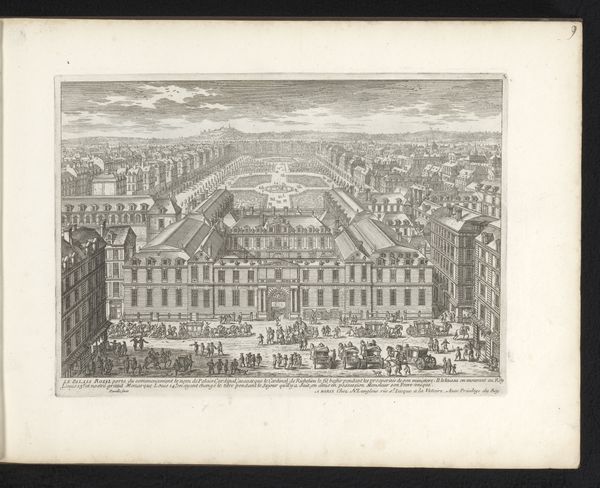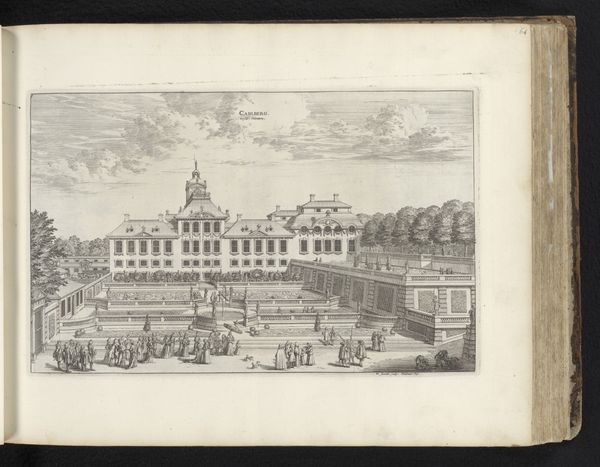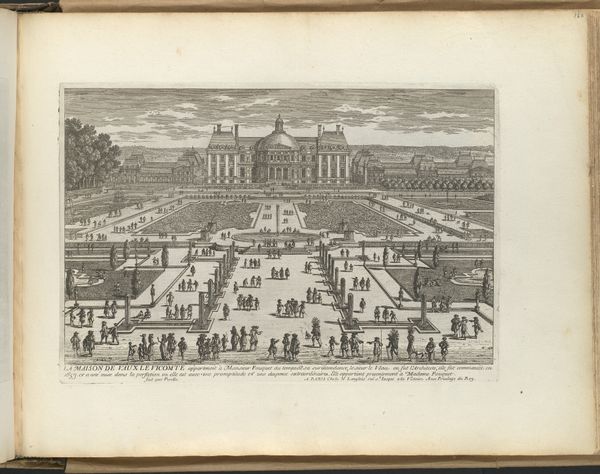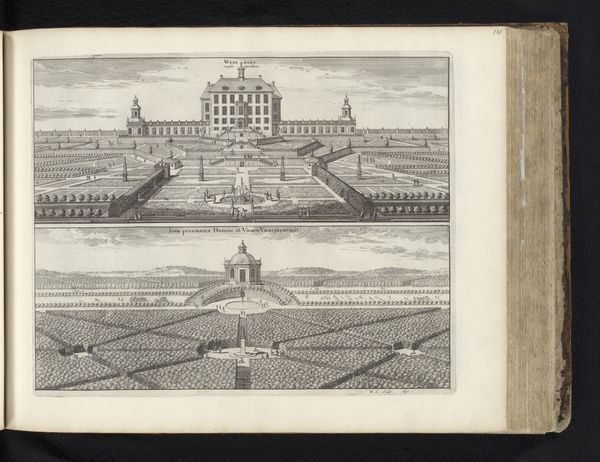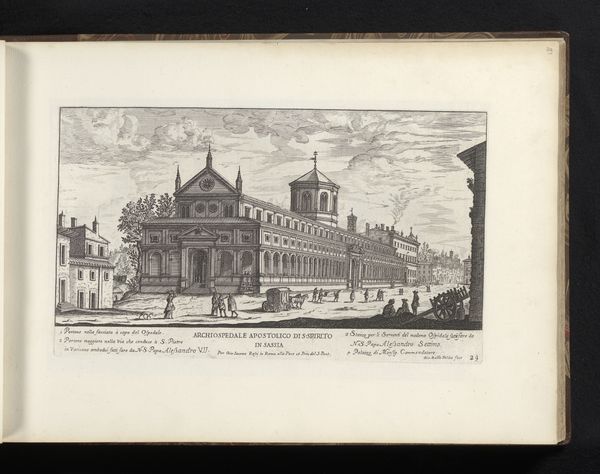
drawing, paper, ink, engraving, architecture
#
drawing
#
baroque
#
ink paper printed
#
landscape
#
paper
#
ink
#
line
#
cityscape
#
academic-art
#
engraving
#
architecture
Dimensions: height 186 mm, width 270 mm
Copyright: Rijks Museum: Open Domain
Curator: Adam Perelle's "Gezicht op het klooster van Val-de-Grâce vanuit de tuin," dating between 1668 and 1695, offers a fascinating look at baroque architecture. The artwork, held here at the Rijksmuseum, employs ink on paper to depict this Parisian cityscape. Editor: It’s astonishing, really, how a simple medium can conjure up such detail! Look at that light—the dome practically glows, doesn’t it? Makes you want to be strolling in that garden, even if you are surrounded by all those figures who seem very pious! Curator: It speaks volumes about Perelle’s skill, absolutely! His strategic use of line captures the Val-de-Grâce in its political and social context. During its time, such depictions of royal sites played a role in communicating the grandeur and order of the French monarchy. The religious structure is clearly meant to project power. Editor: Power, yes, but also privilege, right? I can almost feel the weight of those socio-economic hierarchies just by looking at those tiny figures dwarfed by the architecture. I find it subtly disquieting—pretty on the surface, maybe, but layered with something a bit unsettling. It has that baroque pomp but still feels cold to me. Curator: Indeed, understanding baroque art involves confronting these tensions. On the one hand, it was undoubtedly used as a tool to reinforce societal power dynamics through aesthetics. It is also important to acknowledge, however, Perelle’s artistic accomplishment in constructing such detailed views. We could also argue that the artist captured in it what you recognize in it: this exact tension between humans, belief and architecture. Editor: Mmm, well, maybe... it just hits me that even these carefully manicured gardens reek of control and, dare I say it, a bit of stuffy repression. That perspective…! It gives me the sensation of overseeing the little people walking about. In this, it seems kind of like a godly vantage point! It may be something the author may or not want it to mean to the public who view his art. Curator: And in engaging with the piece critically, acknowledging not just its aesthetic qualities but its possible role in the cultural and political landscape of its time, we can broaden the dialogue. This invites conversation regarding architectural power structures as a product of France’s long cultural history. Editor: Right, makes me want to chain myself to something in protest... or at least re-imagine the space as a liberated, community garden teeming with vibrant, non-conforming life. Anyway, glad we dove into the inkiness of it all!
Comments
No comments
Be the first to comment and join the conversation on the ultimate creative platform.
